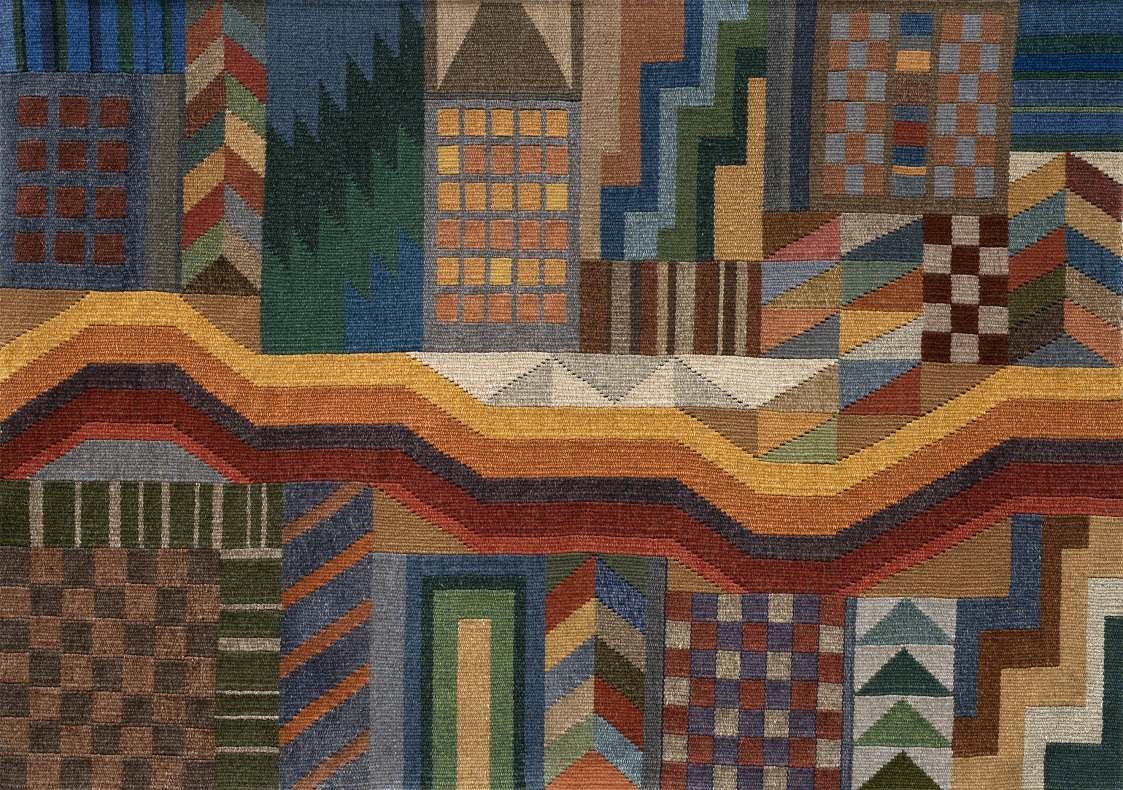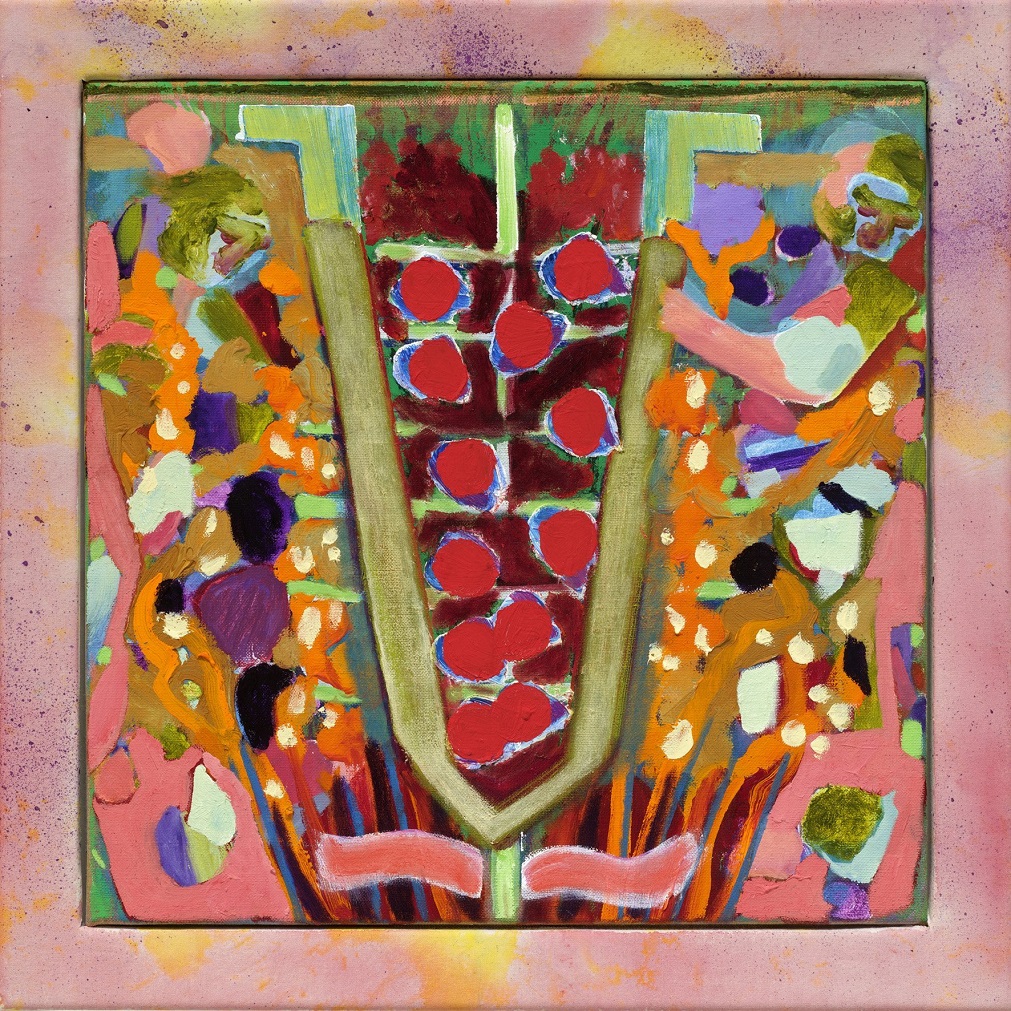
(Dunedin Public Art Gallery)
"Margery Blackman: Weaving, Life" is an encompassing survey exhibition that documents and celebrates the accomplishments of Blackman’s artistic practice and contribution to textiles scholarship.
Selected works, floor rugs and hand-woven tapestries, showcase Blackman’s artistic concerns with structure, colour and geometry — all integrally informed by technique. From Aramoana (1981-82) is a representative work from the early 1980s in its compositional treatment of colour and form; conceptually, it is also an understated protest work associated with the Save Aramoana Campaign (1974-83). Accompanying display cases include relevant documentation and publications associated with Blackman’s career and spirals of influence over the years.
On the opening weekend of "Margery Blackman: Weaving, Life" was a series of presentations by scholars and curators who had worked alongside Blackman at various stages of her career. These seminars unfurled examples of significant curatorial and scholarly work: Linda Tyler spoke on Blackman’s contribution to design history, noting work on illustrator Lily Daff and bookbinder Eleanor Joachim. Patricia Te Arapo Wallace (Ngāti Porou) contextualised Blackman’s contribution to the book Whatu Kākahu: Māori Cloaks (2011), edited by Awhina Tamarapa, focusing on traditional Māori textiles and clothing technology and exhibition histories. Jane Malthus was joined by curator Moira White to present on Blackman’s achievements as an honorary curator at Tūhura Otago Museum.

(Dunedin Public Art Gallery)
This exhibition invites viewers to consider four different approaches to chaptered works of art: each work is made up of more than one part, or is to be viewed as a narrative sequence. In quite different ways, these four artworks are monumental in scale — in dimension and presentation they are distinctly powerful works.
Upon entering the exhibition space, Ralph Hotere’s painting February, May and the Birds of Ice. The Moon Drowns in its Voices of Water (1970), titled by poet Bill Manhire, draws the viewer into a deep colour field. Winter Road (1985), by Jeffrey Harris, is installed on the opposite wall and is a commanding and multi-dimensional and emotional character study in vibrant colour.
A collaborative work by Madame and the Bastard (Julia Morison and Heather Straka), Madame descending the staircase (2016), is a theatrical photographic sequence. Set against a 19th century Spanish wall tapestry in Olveston house in Ōtepoti Dunedin, this series plays with the tension between composition and narrative.
Fiona Connor’s "Community Notice Board" works span from 2015 to 2022. Convincingly, each work is a replica of an actual notice board from one time and place in Los Angeles, replete with notices of lost dogs, rooms for rent, lawn-mowing services, or personal ads, for example.

(Dunedin Public Art Gallery)
"Stars, lands" celebrates the many and varied connections between a making process, colour and composition, and the way the written word can inform making and thinking about visual works.
Nicola Farquhar is this season’s participant in the Dunedin Public Art Gallery’s Aotearoa New Zealand Visiting Artist Programme. The exhibition consists primarily of paintings, but includes moving image and a published anthology of literary works chosen by the artist. Farquhar’s work is brightly energetic and layered in terms of thematic engagements, colour, texture and composition.
After viewing the exhibition, I read the associated publication (also titled "Stars, lands" and jointly published by the Dunedin Public Art Gallery and Bowstring). The book is a collection of seemingly disparate works of poetry and fiction by a range of local, international, contemporary and historic literary stars. After reading, I was able to appreciate the visual works in a fuller sense: I could see thematic associations and motifs — the cosmos, flowers, birds and the body, for example — in multiple forms across written and visual components of the show. For the artist, according to the book’s front matter, the selection of writings "offer points of reference, impetus and familiarity", and I think this is representative of the exhibition overall — it warmly invites us to think along with the artist.
By Joanna Osborne












